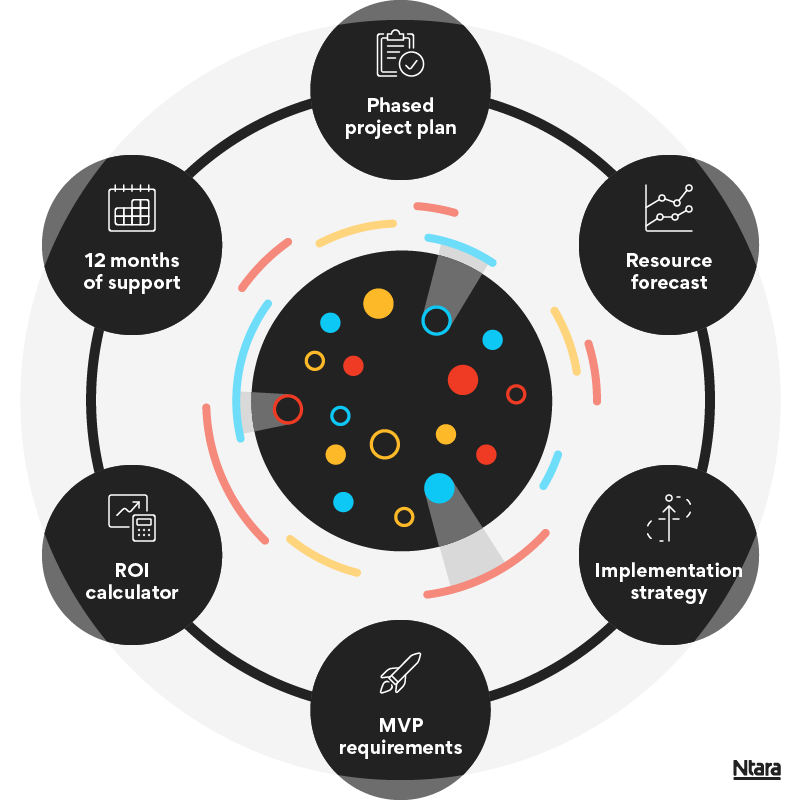
Product-based companies typically have complicated data processes. They’re pieced together over time. Your teams have “made it work” for a while now, with many different systems performing individual parts of the product information management (PIM) function.
But your current setup isn’t working in concert. You’re not able to scale to the demands of multichannel with confidence. You know you need PIM but you aren’t sure where to start.
Additionally, you’ve experienced at least one of these in the last six months:
- Overlap or gap in your product-related tech stack
No one has time to manage this type of massive, enterprise-level change - A process optimization initiative fizzled out
They work in a tangled web of piecemeal software, spreadsheets, and workflows - Complaints from the team about processes
It’s captured inconsistently and showing up inconsistently downstream - Lack of confidence in your product data
You’re not certain which software to remove, replace, or add
Why you need a 360° product data assessment
Your internal processes set the pace of profitability. If they’re slow and complicated, your teams waste valuable time trying to fix them. But if they’re optimal, your teams can focus on important things, like growing the business.
Product marketers could write better descriptions that sell more products. Product managers could conduct more thorough research and generate more frequent ideas. Channel managers could add more selling channels and optimize existing ones. IT and marketing leadership would have the visibility to know where and when to make the next product-data related investments.
Don’t let your lack of process impede sales. PIM software can transform how your business captures, manages, and syndicates product data. But before you can implement, you need a comprehensive plan of attack.


What is product data 360?
Ntara’s flagship product data service is delivered in two parts. First, the analysis. Then, the roadmap.
During analysis, we take a 360° look at your product data. Where does it come from? How is it captured and managed? Who is involved? We examine processes, systems, and integrations. We learn company goals and common pain points.
The result is a prioritized action plan. First, recommendations specific to product data—what’s missing, duplicated, critical, or nice to have. Then, your path to PIM implementation. With this 18-month roadmap, you’ll understand exactly where you’re going and how to get there.
How does Ntara approach a 360° product data assessment?
This full-scale analysis and planning engagement gives you a prioritized project list and context for each recommendation. You’ll have everything you need to gain and maintain internal alignment on product data initiatives.
You’ll also have everything you need to prepare for a successful PIM implementation, including:
- Phased and prioritized project plan
Gain alignment with the right internal teams in the right order - Staffing and resource forecast
Manage availability and timeline in advance of the implementation - PIM implementation strategy
What’s coming out-of-the-box and what needs to be customized - MVP requirements
What is critical for the initial launch and what can be added iteratively - ROI calculator
Document time and money savings as you optimize your processes - 12 months of support
Product data consulting meetings for one year after strategy is delivered
A 360 product data strategy ensures your organization can implement PIM and scale to more downstream channels.

What you get from a 360° product data assessment
At the end of this project, you’ll have everything you need to prepare for a successful PIM implementation, including:

PIM implementation strategy
What’s coming out-of-the-box and what needs to be customized

MVP requirements
What is critical for the initial launch and what can be added iteratively

ROI calculator and report
Document time and money savings as you optimize your processes

12 months of support
Product data consulting meetings for one year after strategy is delivered

Phased and prioritized project plan
Gain alignment with the right internal teams in the right order

Staffing and resource forecast
Manage availability and timeline in advance of the implementation
Get more PIM content in your inbox.
Join our email list to receive information from the digital consultant’s perspective.
Still evaluating PIM? We can help with that, too.
Before diving into PIM, your business may want to test the waters with a PIM readiness assessment.
Ready to start your 360° product data assessment?
Schedule a meeting with a member of our team to begin the conversation.
